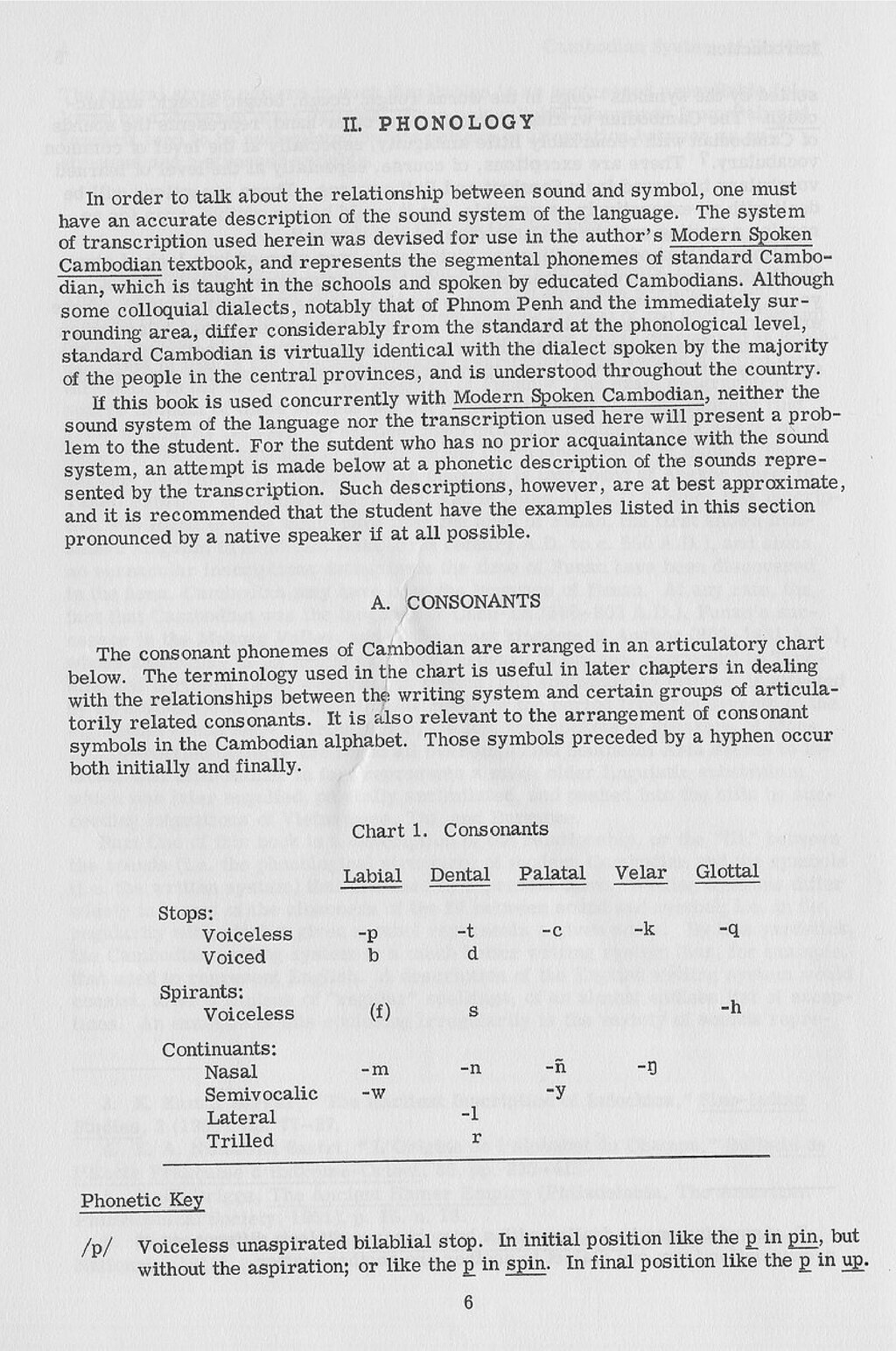II. PHONOLOGY
In order to talk about the relationship between sound and symbol, one must have an accurate description of the sound system of the language. The system of transcription used herein was devised for use in the author’s Modern Spoken Cambodian textbook, and represents the segmental phonemes of standard Cambodian, which is taught in the schools and spoken by educated Cambodians. Although some colloquial dialects, notably that of Phnom Penh and the immediately surrounding area, differ considerably from the standard at the phonological level, standard Cambodian is virtually identical with the dialect spoken by the majority of the people in the central provinces, and is understood throughout the country.
If this book is used concurrently with Modern Spoken Cambodian, neither the sound system of the language nor the transcription used here will present a problem to the student. For the sutdent who has no prior acquaintance with the sound system, an attempt is made below at a phonetic description of the sounds represented by the transcription. Such descriptions, however, are at best approximate, and it is recommended that the student have the examples listed in this section pronounced by a native speaker if at all possible.
A. CONSONANTS
The consonant phonemes of Cambodian are arranged in an articulatory chart below. The terminology used in the chart is useful in later chapters in dealing with the relationships between the writing system and certain groups of articulatorily related consonants. It is also relevant to the arrangement of consonant symbols in the Cambodian alphabet. Those symbols preceded by a hyphen occur both initially and finally.
| Labial | Dental | Palatal | Velar | Glottal | |
| Stops: | |||||
| Voiceless | -p | -t | -c | -k | -q |
| Voiced | b | d | |||
| Spirants: | |||||
| Voiceless | (f) | s | -h | ||
| Continuants: | |||||
| Nasal | -m | -n | -ñ | -ŋ | |
| Semivocalic | -w | -y | |||
| Lateral | -l | ||||
| Trilled | r | ||||
Phonetic Key
| /p/ | Voiceless unaspirated bilablial stop. In initial position like the p in pin, but without the aspiration; or like the p in spin. In final position like the p in up. |
